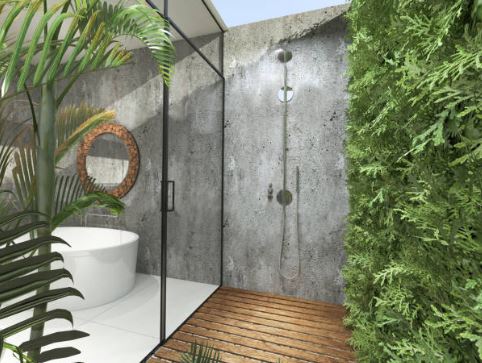Bathroom Plumbing: A Comprehensive Guide to Keeping Your Pipes and Fixtures in Top Shape
In today’s fast-paced world, the bathroom is often the sanctuary where we find solace and rejuvenation. However, the functionality and comfort of this space heavily rely on an often neglected aspect of our homes – plumbing. Proper bathroom plumbing ensures that you have a hassle-free experience every time you step into this essential part of your house. In this comprehensive guide, we will delve into the intricacies of bathroom plumbing, addressing common issues, maintenance tips, and how to keep your fixtures in top shape. Let’s get started!
Table of Contents
- Introduction to Bathroom Plumbing
- The Anatomy of a Bathroom Plumbing System
- Understanding the Main Water Supply
- Drainage and Ventilation
- Water Heating
- Common Bathroom Plumbing Issues and Solutions
- Leaky Faucets and Fixtures
- Clogged Drains
- Running Toilets
- DIY Bathroom Plumbing Maintenance Tips
- Regular Inspections
- Preventing Clogs
- Water Heater Care
- When to Call a Professional Plumber
- Identifying Serious Problems
- Signs of Water Damage
- Upgrading Your Bathroom Plumbing
- Energy-Efficient Fixtures
- Modern Plumbing Trends
- Eco-Friendly Plumbing Practices
- Low-Flow Fixtures
- Water Recycling Systems
- Conclusion: The Importance of Bathroom Plumbing
- FAQs: Your Bathroom Plumbing Questions Answered
1. Introduction to Bathroom Plumbing
Bathroom plumbing forms the backbone of your home’s plumbing system. It ensures a seamless flow of clean water into your fixtures and the efficient removal of wastewater. Understanding how this system works is vital for maintaining a functional and comfortable bathroom.
2. The Anatomy of a Bathroom Plumbing System
Understanding the Main Water Supply
Your bathroom receives its water supply from the main water line. It’s essential to know how to shut off this supply in case of emergencies, such as leaks or repairs.
Drainage and Ventilation
The drainage system in your bathroom includes pipes that carry wastewater away from sinks, toilets, and showers. Proper ventilation is crucial to prevent foul odors and ensure efficient drainage.
Water Heating
Many bathrooms have water heaters, either tankless or tank-style, to provide hot water for showers and sinks. Understanding how your water heater works can help you optimize its efficiency.
3. Common Bathroom Plumbing Issues and Solutions
Leaky Faucets and Fixtures
Leaky taps can waste a significant amount of water. Learn how to fix them or when to call a professional.
Clogged Drains
Clogs can lead to slow drainage or backups. Discover effective methods for unclogging your bathroom drains.
Running Toilets
A running toilet can significantly increase your water bills. Find out how to stop this common problem.
4. DIY Bathroom Plumbing Maintenance Tips
Regular Inspections
Learn how to perform routine checks on your plumbing system to catch issues early.
Preventing Clogs
Explore preventative measures to keep your drains clear and free-flowing.
Water Heater Care
Extend the lifespan of your water heater with simple maintenance tasks.
5. When to Call a Professional Plumber
Identifying Serious Problems
Some plumbing issues require the expertise of a professional. Know when it’s time to call in a plumber.
Signs of Water Damage
Learn how to spot signs of water damage and prevent costly repairs.
6. Upgrading Your Bathroom Plumbing
Energy-Efficient Fixtures
Discover the benefits of energy-efficient fixtures for both your wallet and the environment.
Modern Plumbing Trends
Stay up-to-date with the latest plumbing trends to enhance your bathroom’s functionality and aesthetics.
7. Eco-Friendly Plumbing Practices
Low-Flow Fixtures
Reduce water consumption by installing low-flow fixtures without sacrificing performance.
Water Recycling Systems
Explore innovative water recycling systems that conserve resources and lower utility bills.
8. Conclusion: The Importance of Bathroom Plumbing
Maintaining your bathroom plumbing is essential for a comfortable and functional space. With proper care and knowledge, you can ensure your bathroom remains a haven of relaxation.
FAQs: Your Bathroom Plumbing Questions Answered
- How often should I inspect my bathroom plumbing?
- Regular inspections are recommended at least once every six months.
- What are some signs of a hidden plumbing leak in my bathroom?
- Look out for water stains on walls or ceilings, musty odors, and unexplained increases in water bills.
- Can I replace my bathroom fixtures myself?
- Simple fixture replacements can be DIY projects, but complex installations may require professional help.
- What are the advantages of low-flow fixtures?
- Low-flow fixtures reduce water consumption, lower utility bills, and contribute to environmental conservation.
- How can I make my bathroom more eco-friendly?
- You can make your bathroom more eco-friendly by using low-flow fixtures, water recycling systems, and energy-efficient appliances.
Now that you have a comprehensive understanding of bathroom plumbing, you can ensure that this essential part of your home remains in top shape. Remember to prioritize regular maintenance and stay updated on the latest plumbing trends to enhance your bathroom’s functionality and eco-friendliness.
Need to contact a plumber then call us in the Wellington Point Area at 0409 364 858 or contact us here
Here are some great posts about plumbing right here.
Tradelink And or Reece’s are a good place to start for fine tapware.

